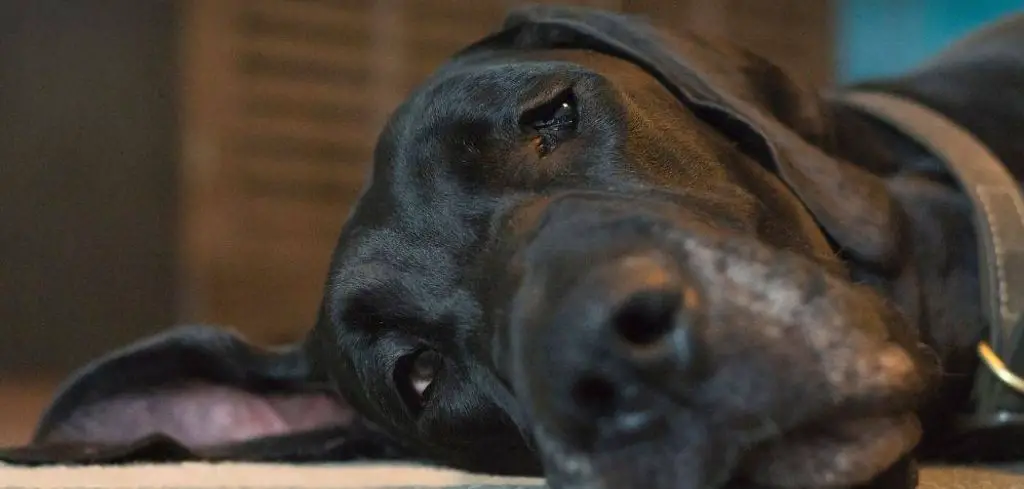It can be alarming to watch your dog suddenly start drooling heavily and trembling. These symptoms may appear out of nowhere and could be signs of something as simple as excitement—or as serious as poisoning or pain.
We outline the reasons why your dog is excessively drooling and shaking, what you can do at home, and when to seek veterinary help.
Table of Contents
Dog Excessively Drooling and Shaking — Why It Happens
Excessive drooling combined with shaking usually signals discomfort, distress, or a medical emergency. Dogs may react this way to nausea, heatstroke, poisoning, dental pain, or emotional stress.
Neurological disorders and internal pain can also trigger these symptoms, often accompanied by restlessness or behavioral changes.
In many cases, these signs are your dog’s way of saying something is very wrong internally, even if no external wounds are visible. Getting to the root of the issue is crucial.

Reasons Why Your Dog Is Excessively Drooling and Shaking
Nausea or Motion Sickness
Nausea is a common trigger for both drooling and shaking. Dogs that feel queasy often start salivating excessively and may tremble due to discomfort.
This can happen during car rides, after eating something they shouldn’t, or as a symptom of a deeper condition like gastritis or kidney disease.
Owners might also notice lip licking, vomiting, or pacing. While mild nausea can resolve on its own, repeated episodes deserve medical attention.
Read more: Dog Excessively Drooling Suddenly (What’s causing it?)
Poisoning or Toxin Ingestion
One of the most serious causes is toxin exposure. Dogs that ingest poisonous substances like chocolate, xylitol, certain plants, or insecticides may start drooling and trembling soon after.
Other symptoms can include vomiting, diarrhea, seizures, or extreme lethargy. These emergencies progress rapidly and can be fatal if not treated quickly.
Even small amounts of certain toxins can severely affect your dog’s nervous or digestive systems.
Dental Pain or Oral Injury
Oral pain is another culprit. Infections, broken teeth, gum disease, or lodged foreign objects (like bones or sticks) can cause drooling due to discomfort.
Shaking may result from stress or pain. Dogs in oral distress may paw at their mouth, avoid eating, or show irritability.
If your dog suddenly refuses food or yelps when opening their mouth, it’s time to inspect or see your vet.
Heatstroke
Panting, drooling, and trembling are all warning signs of overheating. Heatstroke occurs when dogs are exposed to high temperatures for too long, especially in hot cars or during intense exercise.
Symptoms can escalate quickly to vomiting, collapse, or seizures. Flat-faced breeds like Bulldogs and Pugs are particularly vulnerable.
This condition is life-threatening and demands immediate cooling and veterinary intervention.
Pain or Injury
Internal pain from trauma, arthritis, or abdominal issues can also trigger trembling and drooling. Dogs don’t always cry out in pain—they often internalize it.
These signs may be accompanied by whining, restlessness, or hiding. Drooling can be a stress response, while shaking may indicate pain severity.
If your dog seems off, limping, or won’t let you touch a certain area, get them checked.
Stress, Anxiety, or Fear
Emotional distress is another possible explanation. Some dogs drool and tremble during thunderstorms, vet visits, or when left alone (separation anxiety).
These behaviors are usually situational and resolve once the stressor is removed. However, chronic anxiety may need behavioral intervention or medication.
You might notice panting, pacing, whining, or hiding alongside the shaking and drooling.
What to Do If Your Dog Is Excessively Drooling and Shaking
First, stay calm and assess your dog’s environment. Remove any possible toxins, sharp objects, or heat sources. If you suspect poisoning, overheating, or injury, do not wait—call your vet immediately.
Keep your dog in a cool, quiet space and monitor their breathing and behavior. Offer fresh water, but don’t force them to drink. Avoid giving food or human medications unless instructed by your vet.
If your dog seems nauseous but alert, observe for a few hours to see if symptoms resolve. However, if symptoms persist or worsen, seek veterinary help.
For stress-related episodes, use soothing tones, calming treats, or anxiety wraps. If these incidents are frequent, consider behavioral training or veterinary support.
When to Call or Visit Your Vet
If your dog’s drooling and shaking comes on suddenly and severely, it’s safest to call your vet right away.
Seek immediate care if your dog:
Has also vomited or collapsed
Is breathing heavily or irregularly
Shows signs of pain when touched
Has pale, blue, or bright red gums
Is disoriented, lethargic, or having seizures
These signs often indicate poisoning, overheating, or internal trauma—all of which require prompt intervention.
Even if symptoms improve at home, a vet visit can rule out hidden issues.
Read more: Dog Drooling Excessively After Eating Snow (What it means)
Key Takeaway
Shaking and drooling aren’t just harmless quirks—they’re signs your dog might be in real distress.
While anxiety or mild nausea may be to blame, more serious causes like poisoning or heatstroke must be ruled out quickly.
Stay alert to changes in behavior, act quickly in emergencies, and never hesitate to contact your vet when something feels off.
With timely care, most dogs recover well—and your swift action could make all the difference.
